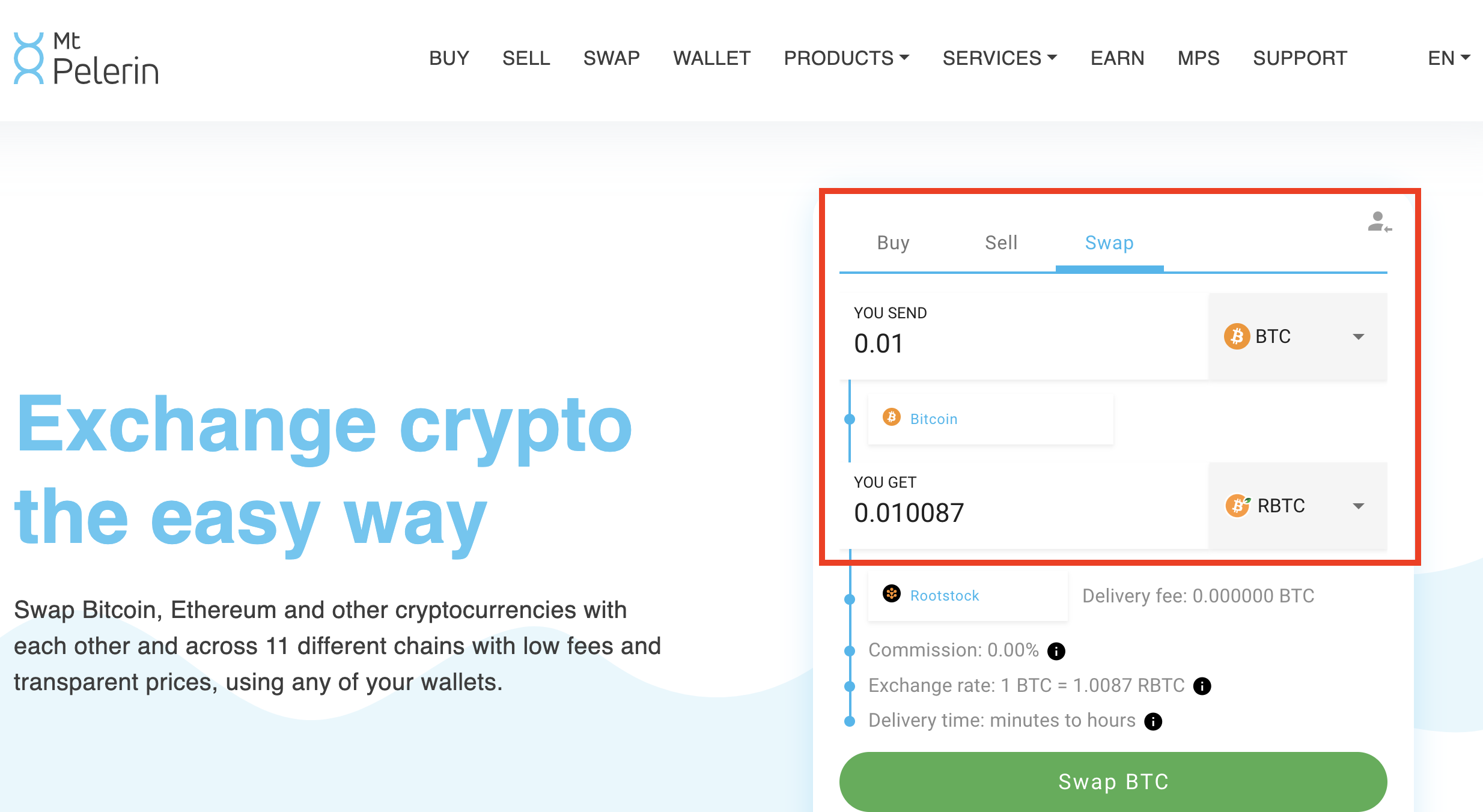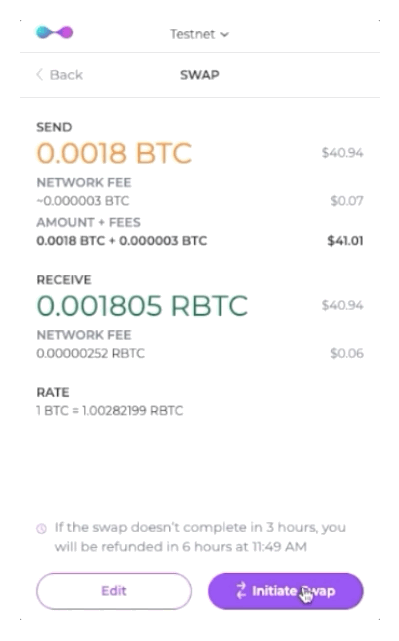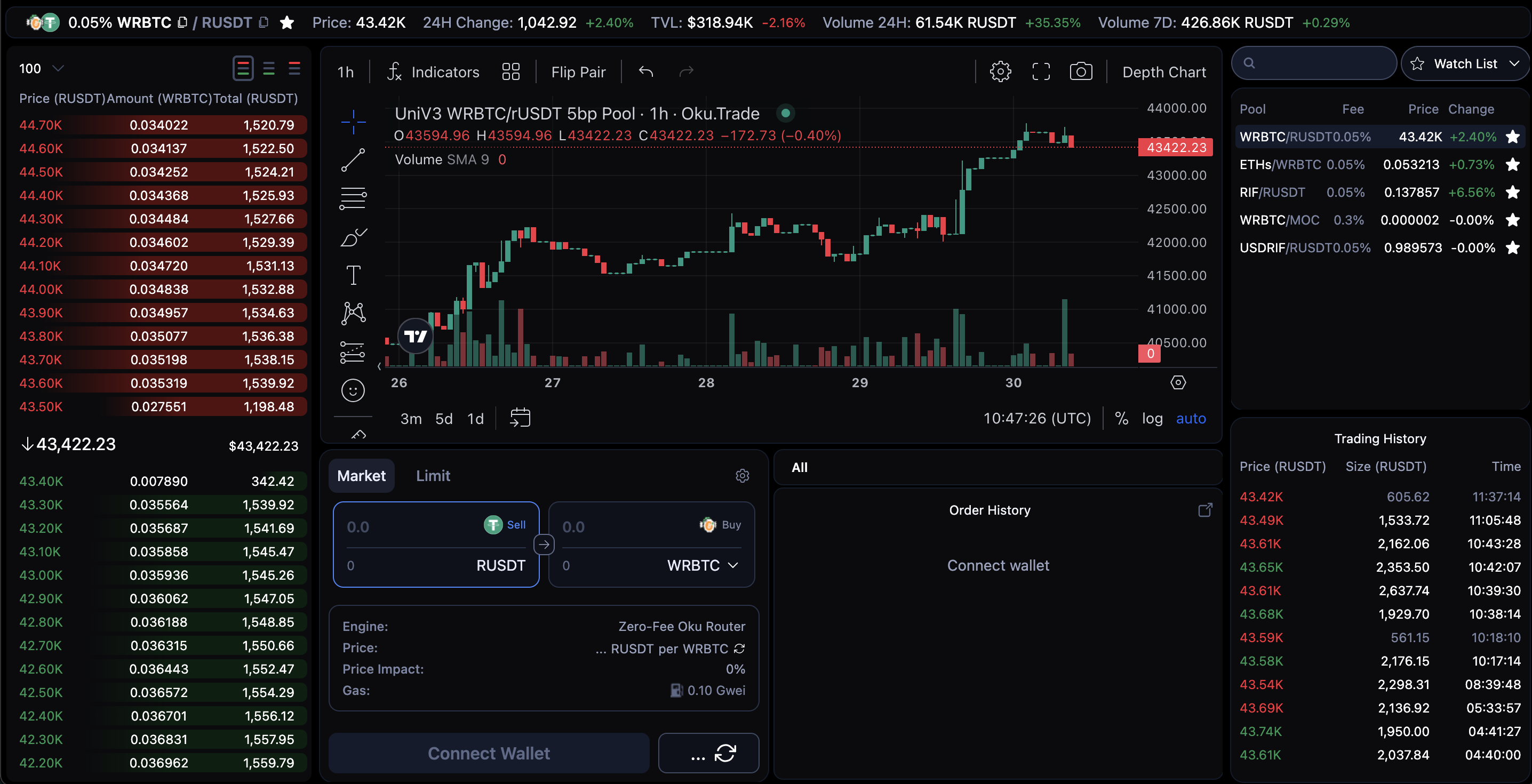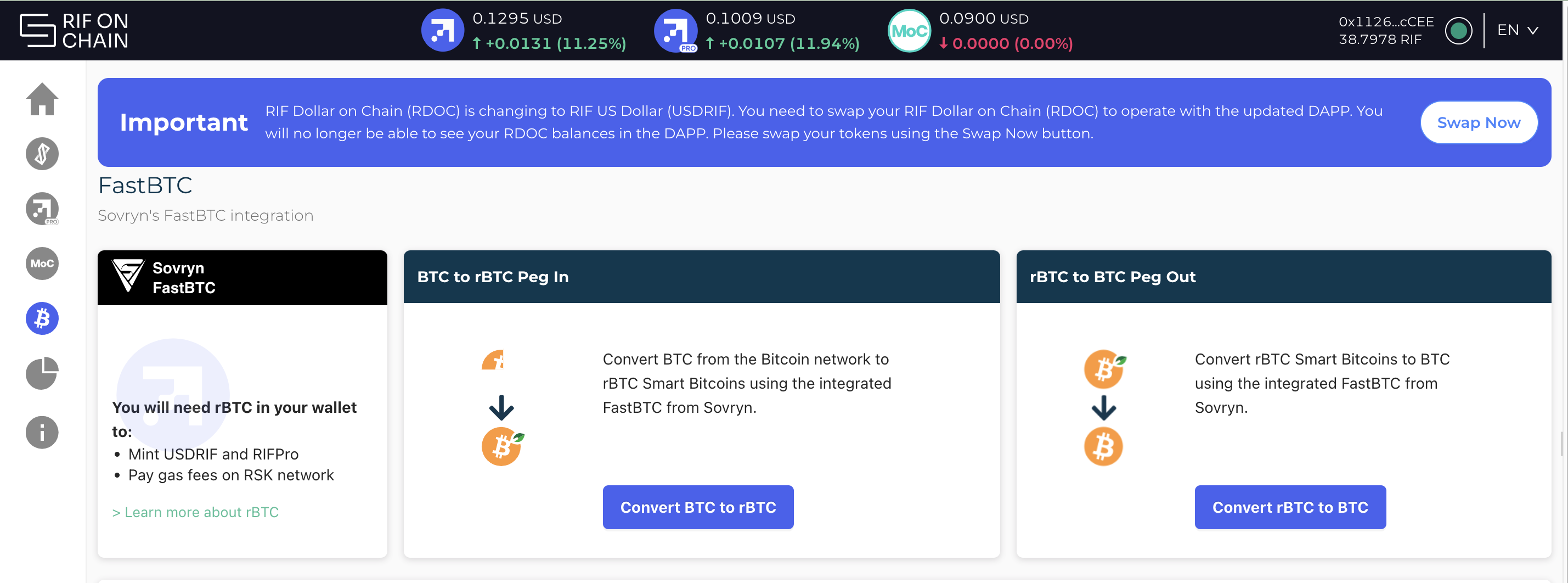How to get RBTC using Cryptocurrency Exchanges | Rootstock (RSK)
Cryptocurrency exchanges present users with a list of currency pairs, essentially individual markets where users can trade one digital asset for another. The price of each pair, reflecting the value of one currency in terms of the other, is typically determined by market forces like supply and demand. However, the exchange itself might set the price in some instances, particularly for stablecoins (tokens pegged to a fiat currency) or inter-pegged cryptocurrencies.
When trading on an exchange, remember that they typically charge fees for each trade and potentially for depositing or withdrawing funds from your personal/custodian accounts.
Centralized cryptocurrency exchanges
One of the ways to get RBTC is to use the services of centralized cryptocurrency exchanges. These are companies who provide a service which allows its users to trade between one cryptocurrency and another cryptocurrency, or a fiat currency and a cryptocurrency. These exchanges hold assets on your behalf - which means that in the case of cryptocurrencies, they operate crypto wallets on your behalf.
The way that exchanges work will be quite familiar if you have traded on a stock exchange or a foreign currency exchange before. They typically have order books to match buy and sell orders among different users, with the price of a particular pair being the last match in the order book.
Read about the 3 Ways to Get RBTC or see how to Get RBTC.
There are currently exchanges that allow users to trade between BTC and RBTC in a centralized way:
- Buenbit
- Buenbit is an intelligent investment, savings and credit platform with an international Mastercard® card that allows you to use your balance to pay.
- Deposit and withdraw Fiat (local currency) by bank transfer to your own account.
- Buy and sell your titles.
- Buy and sell: BTC, ETH, RIF, RBTC and RDOC.
- Criptala
- Criptala is a Uruguayan cryptocurrency exchange platform focused on facilitating buying and selling of cryptocurrencies for individuals in the country. It offers a user-friendly platform and allows users to:
- Purchase and sell major cryptocurrencies, including BTC, ETH, RBTC, RIF, DOC and rDOC.
- Deposit and withdraw funds using Uruguayan pesos (UYU) through bank transfers, cash, and wire transfers.
- Convert between fiat and crypto through RedPagos, a widespread network of payment collection points in Uruguay, aiming to simplify access for users.
- Criptala is a Uruguayan cryptocurrency exchange platform focused on facilitating buying and selling of cryptocurrencies for individuals in the country. It offers a user-friendly platform and allows users to:
- AgenteBTC
- AgenteBTC is a Peruvian cryptocurrency exchange platform that allows users to:
- Buy and sell cryptocurrencies like BTC, RBTC, SOL, and USDT using Peruvian Soles (PEN) or US Dollars (USD).
- Invest and trade in cryptocurrencies by offering educational resources and various tools for trading strategies.
- Deposit and withdraw funds through bank transfers or cash deposits at over 12,000 affiliated locations.
- AgenteBTC is a Peruvian cryptocurrency exchange platform that allows users to:
Decentralized Cryptocurrency Exchanges
In addition to centralized exchanges, another cryptocurrency exchange category acts similarly but does not require registration or KYC. These are called decentralized exchanges, and they provide services that allow users to trade between BTC and RBTC.
Pros:
- No registration or KYC required.
- Easier to use than the Rootstock PowPeg.
- Faster than the Rootstock PowPeg.
- Allow exchanges of small amounts of BTC/RBTC.
Cons:
- Users give custody of the transferred funds.
- Users need to pay fees.
- Usually not suitable for larger transaction amounts.
- Requires liquidity provision.
- Potential regulatory, compliance, or money transmitter risks, for companies providing these services.
- Sovryn Fast BTC
- Sovryn is a non-custodial and permissionless smart contract based system for Bitcoin lending, borrowing and margin trading. Users can buy SOV with RBTC, swap and trade: DOC, BPRO, rUSDT, xUSD, and MOC tokens.
- Get RBTC on Sovryn Fast BTC
- Mt Pelerin
- Mt Pelerin is a digital asset trading platform, it offers a way to buy cryptocurrencies such as RBTC and other assets on any of your wallets instantly by card or bank transfer. Including getting the live market price, the lowest fees and no hidden costs.
- BTC/RBTC pair on MtPelerin

- Bisq
- Bisq allow users to buy and sell bitcoin for fiat (or other cryptocurrencies including RBTC) privately and securely using Bisq's peer-to-peer network and open-source desktop software. No registration required.
- Bisq allow users to buy and sell bitcoin for fiat (or other cryptocurrencies including RBTC) privately and securely using Bisq's peer-to-peer network and open-source desktop software. No registration required.
- Liquality
Liquality

- The Liquality Wallet is a browser extension for accessing Bitcoin and Rootstock applications. This alternative to MetaMask supports multiple blockchains and provides the easiest way to swap between BTC and RBTC, plus transact Rootstock tokens using built-in one-click atomic swaps.
- OKU Trade
- OKU Trade is a decentralized exchange for the Uniswap v3 protocol.

- RIF on Chain
- RIF on Chain is a fully decentralised protocol that gives users a stablecoin pegged 1:1 with USD, and also provides a leveraged token for RIF holders and traders. Convert BTC from the Bitcoin network to RBTC using the integrated FastBTC from Sovryn.

- RIF on Chain is a fully decentralised protocol that gives users a stablecoin pegged 1:1 with USD, and also provides a leveraged token for RIF holders and traders. Convert BTC from the Bitcoin network to RBTC using the integrated FastBTC from Sovryn.
Sending and Receiving RBTC
RBTC is the built-in cryptocurrency of the Rootstock network. This means that (1) you should have a wallet that is configured to work with the Rootstock network, and (2) that wallet must have some RBTC if you wish to send transactions.
Warning: A common mistake users make when interacting with exchanges is that they confuse Rootstock addresses/ wallets with Ethereum addresses/ wallets. Their addresses follow the same format, but they are otherwise incompatible. Do not send RBTC to an Ethereum address on an exchange. Similarly, do not send Ether to an RBTC address on an exchange. Your funds will be burnt (permanently lost) should you do so, as blockchain transactions are immutable, and therefore cannot be undone. It is your own responsibility to ensure that you are using the right wallet, and connected to the right network. RBTC can only be sent to and from Rootstock addresses on the Rootstock network.
- Convert BTC to RBTC
- The general approach to use an exchange to convert BTC to RBTC:
- Find the deposit address on the exchange on the Bitcoin network corresponding to your account on the exchange.
- Use your Bitcoin wallet to send BTC to this Bitcoin address.
- Wait for your BTC balance to appear on your account in the exchange
- Find the BTC/RBTC pair in the exchange, and sell BTC to buy RBTC
- Select a withdrawal address from your Rootstock wallet on the Rootstock network.
- Use the exchange’s user interface to withdraw RBTC to your Rootstock address.
- The general approach to use an exchange to convert BTC to RBTC:
- Convert RBTC to BTC
- The general approach to use an exchange to convert RBTC to BTC:
- Find the deposit address on the exchange on the Rootstock network corresponding to your account on the exchange.
- Use your Rootstock wallet to send RBTC to this Rootstock address.
- Wait for your RBTC balance to appear on your account in the exchange
- Find the BTC/RBTC pair in the exchange, and sell RBTC to buy BTC
- Select a withdrawal address from your Bitcoin wallet on the Bitcoin network.
- Use the exchange’s user interface to withdraw BTC to your Bitcoin address.
- The general approach to use an exchange to convert RBTC to BTC:
Use the user documentation from your chosen exchange for specific guidance on how to do this.